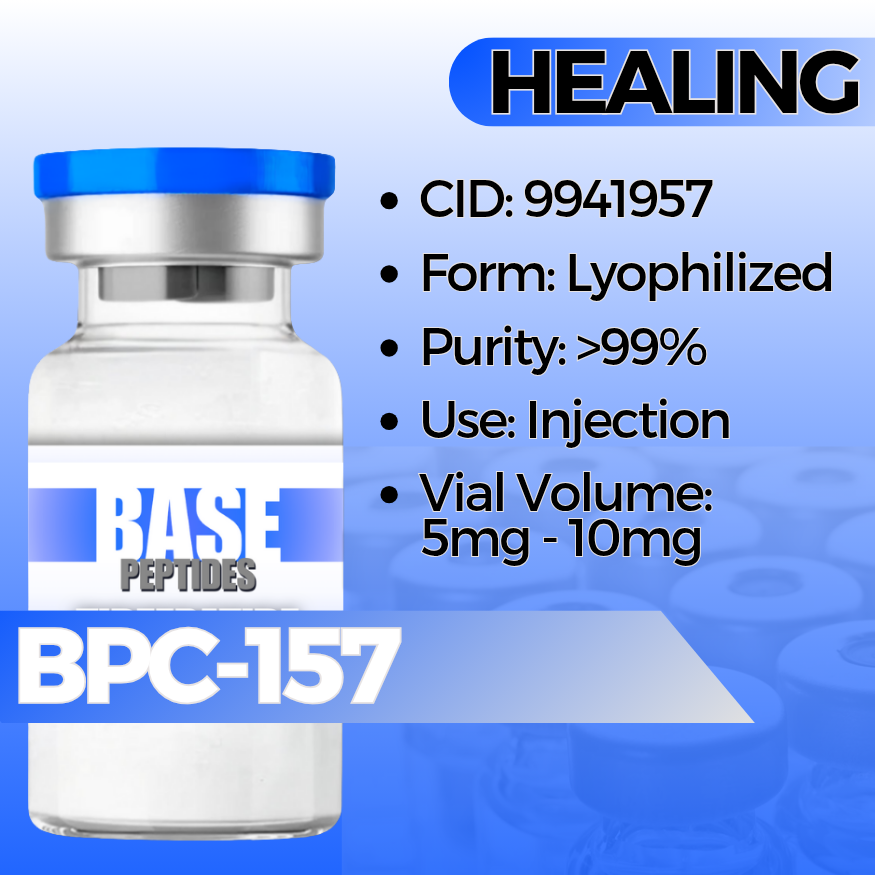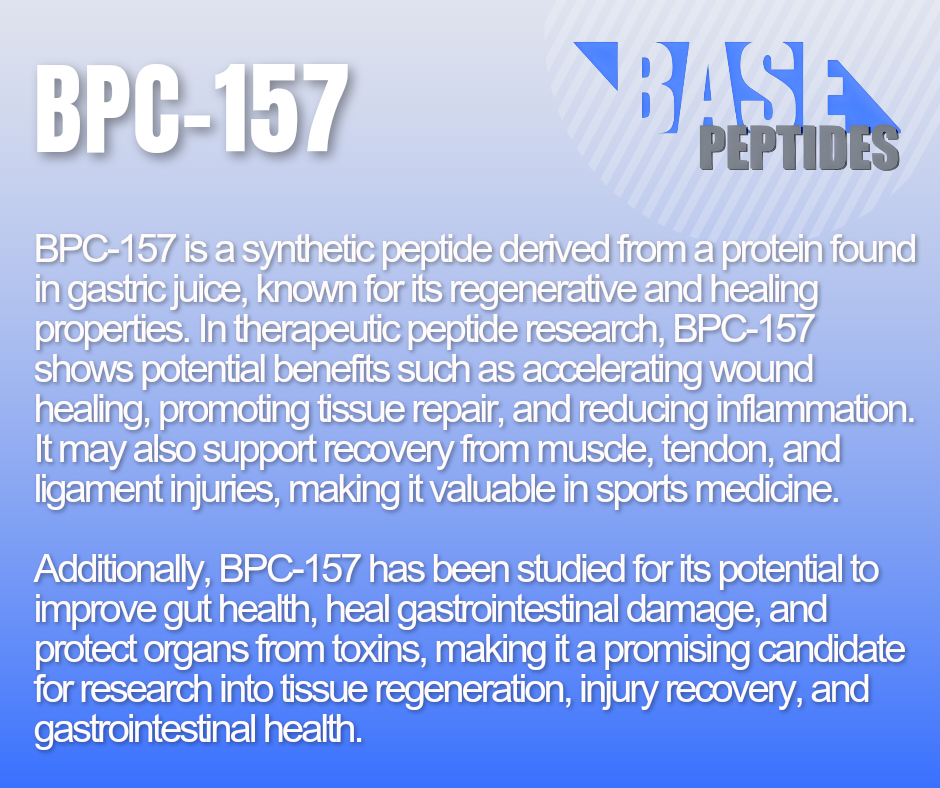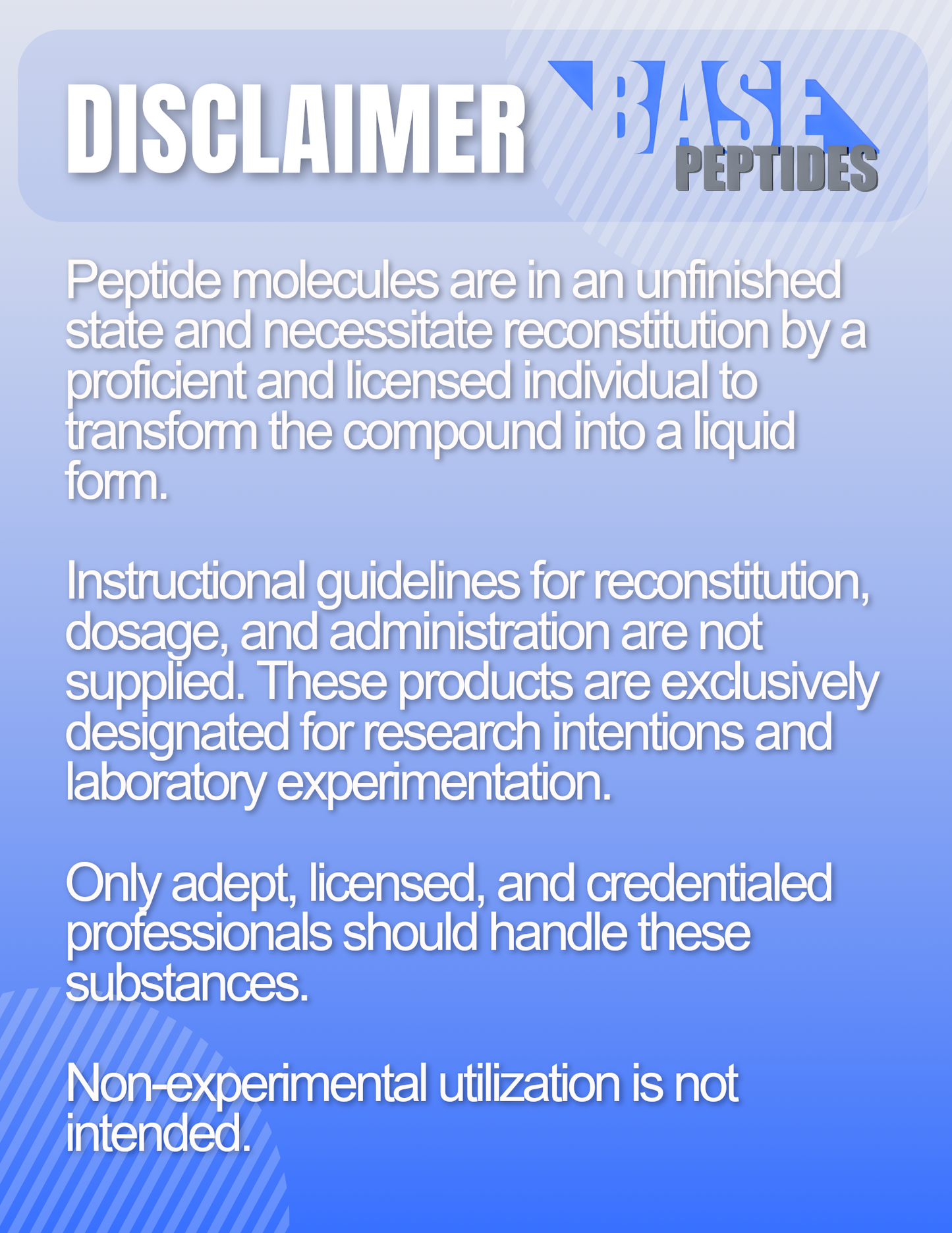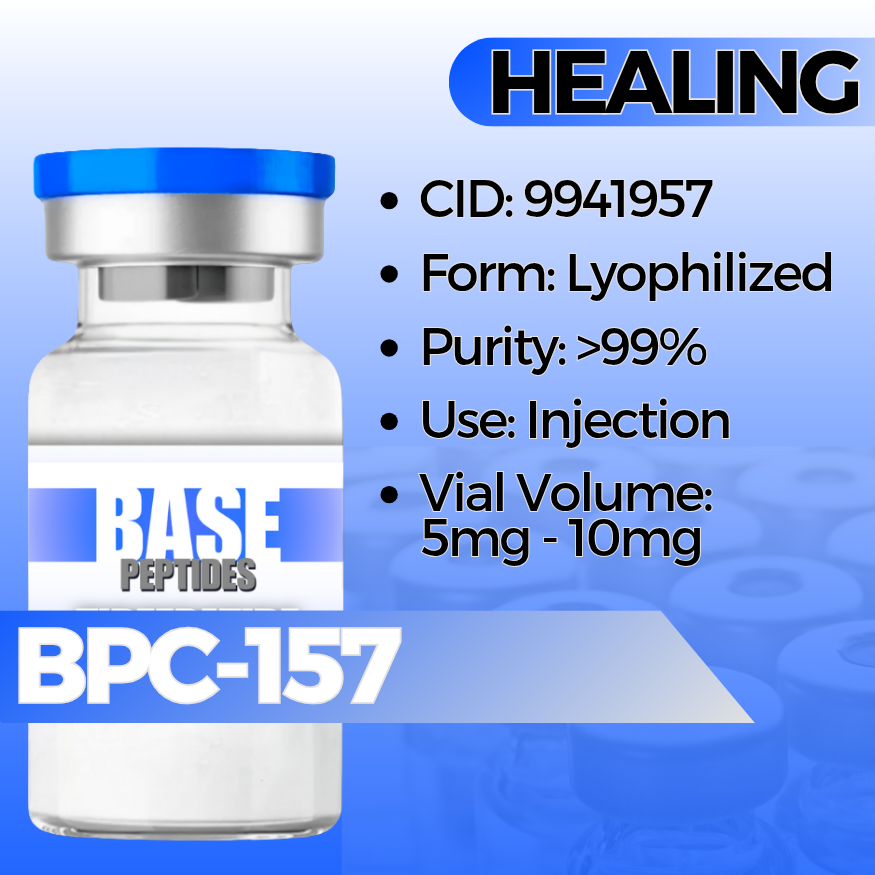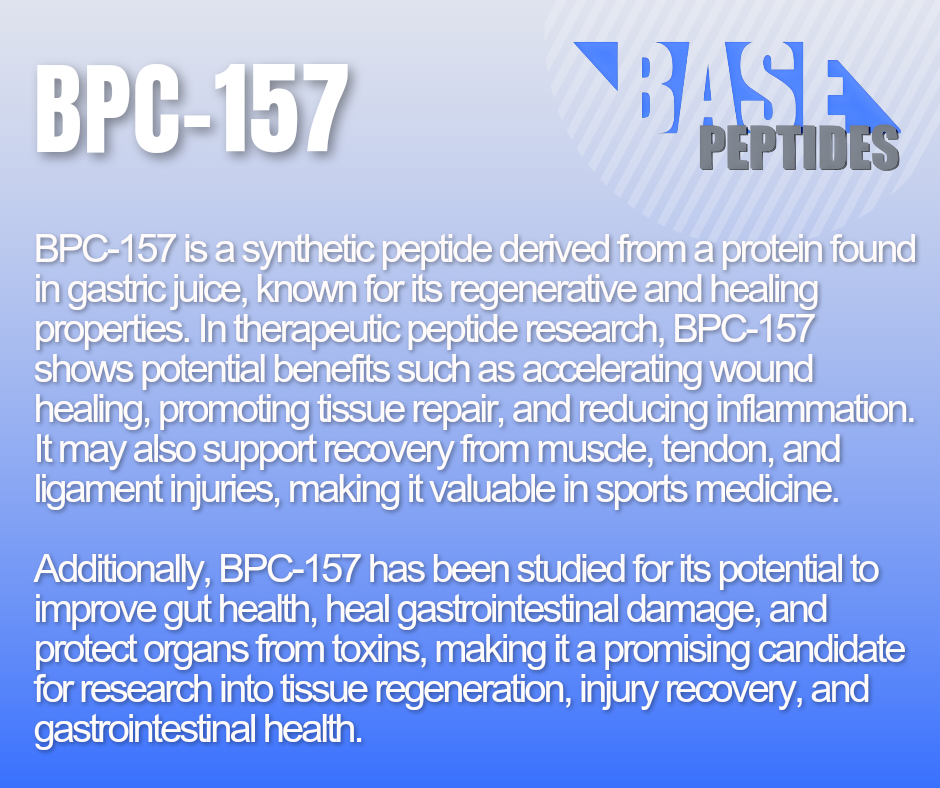BPC-157
BPC-157
Base Peptides are intended for licensed medical professionals and experienced researchers. Reconstitution required. Dosing and use instructions are not provided.
Couldn't load pickup availability
BPC-157 — Research-Grade Pentadecapeptide
BPC-157 is a 15-amino-acid fragment (Gly-Glu-Pro-Pro-Pro-Gly-Lys-Pro-Ala-Asp-Asp-Ala-Gly-Leu-Val) originally derived from a protective protein found in gastric juice. In research settings, it’s used to explore cell-signaling involved in tissue resilience, local blood-flow changes, and gut-barrier integrity.
- CAS: 137525-51-0
- PubChem CID: 9941957
- Formula / MW: C62H98N16O22 · ≈1,419.5 Da
- Sequence: pentadecapeptide (15 aa), shown above
- Originally studied as a stomach-derived protective signal (“body protection compound”).
- Preclinical work suggests it may influence angiogenic markers (tiny blood-vessel growth/repair) and cell-migration signals important for tissue maintenance.
- Frequently used in models that probe gut epithelial barrier behavior and local microcirculation.
- To observe changes in cell signaling related to tissue upkeep and stress response.
- To measure barrier function and tight-junction proteins in gut/epithelial models.
- To explore local microvascular dynamics (blood flow markers) in preclinical assays.
Key Studies — What Was Tested, What Changed, Why It Matters
Gut & barrier models (cell and animal)
- What was tested: Cell-culture and animal models where the intestinal lining or other epithelial layers are challenged.
- What changed: Signals consistent with better barrier integrity (e.g., tight-junction behavior) and changes in local inflammatory markers have been reported.
- Why it matters: These models help labs understand how peptide cues might influence the “seal” between cells—important for nutrient transport and defense in many tissues.
Tissue-maintenance & microcirculation models
- What was tested: Assays that track cell migration, matrix remodeling, and small-vessel behavior after a standardized stressor.
- What changed: Preclinical reports describe shifts in markers related to angiogenesis and matrix balance—signals that often precede visible tissue changes.
- Why it matters: Understanding these early markers helps researchers design smarter protocols before moving to larger animal work.
Nerves, tendons, and connective-tissue paradigms
- What was tested: Targeted models of tendon or nerve stress where labs watch how cells organize and communicate after an insult.
- What changed: Some studies report changes in axon-related or tenocyte markers and local perfusion signals; results depend on model and timing.
- Why it matters: These data help teams decide when to measure outcomes (early molecular markers vs later functional readouts).
Potential Research Applications
Gut & Epithelial Biology
- Tight-junction proteins (e.g., occludin/claudins)
- Barrier-leak assays and permeability tests
Microvascular & Matrix Signaling
- Angiogenesis markers and microcirculation imaging
- Extracellular-matrix balance and cell migration
Connective-Tissue Models
- Tenocyte behavior and collagen organization
- Nerve-associated molecular markers (model-dependent)
Synergistic Peptides (for Study Design)
TB-500 / Thymosin-β4 fragments
- Why pair: Often studied for cell migration and matrix-remodeling cues complementary to BPC-157’s reported signals.
- Angle: Parallel or factorial designs to assess additive effects on early tissue-signaling markers.
GHK-Cu (Copper Tripeptide)
- Why pair: Used in skin/ECM research; can complement BPC-157 in extracellular-matrix and microenvironment assays.
- Angle: Compare matrix-gene expression panels and imaging endpoints.
KPV (α-MSH fragment) (if in catalog)
- Why pair: Frequently used in epithelial models for inflammatory-signal moderation.
- Angle: Permeability + cytokine panels along with barrier-function readouts.
Design Notes
- Keep arms clearly separated (BPC-only vs combo) and pre-register endpoints.
- Capture timing: early molecular signals can precede visible effects.
- Document lot numbers, pH/vehicle, and application route for reproducibility.
Known Concerns (Context)
- Heterogeneity: Protocols and models vary widely across the literature; reproduce with tight controls.
- Interpretation: Many findings are from preclinical work; translate cautiously and avoid consumer-style claims.
- Documentation: Record handling (temperature, light, vehicle) and sampling times precisely—results can be timing-sensitive.
Follow your institution’s SOPs and oversight (IRB/IBC) for handling and design.
Specifications & Handling
- Form: Lyophilized powder (lot-coded)
- Purity: ≥ 99% (HPLC/MS; lot-verified)
- Storage: ≤ −20 °C; protect from light/moisture
- In solution: Prepare aliquots promptly; avoid repeat freeze–thaw
- Additives: None unless specified per lot
- Packaging: Tamper-evident; research-only labeling
Regulatory & Use Notice
Sold for laboratory research use only. Not for human consumption, medical, or veterinary use. No human-use instructions are provided. Buyer is responsible for safe handling and regulatory compliance.
BPC-157 Peptide Research | Pentadecapeptide | Gut Barrier, Microvascular & Matrix Signaling Models
